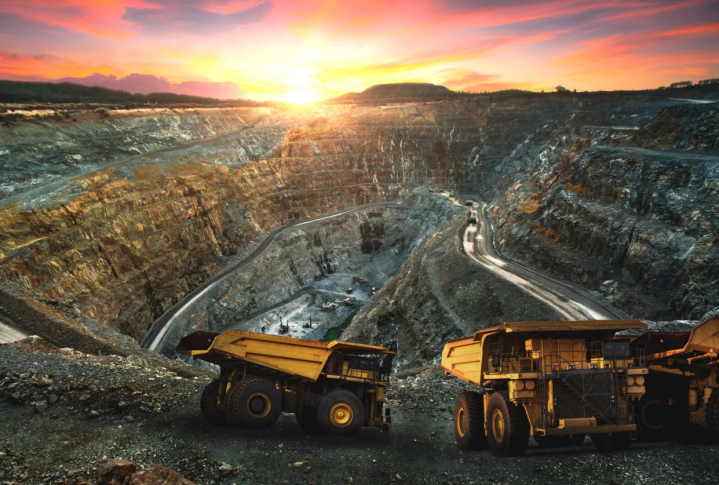SPONSORED CONTENT
Ignore biodiversity and kiss 1.5°C goodbye

The trees in the Amazon Basin are being felled and torched at such a scale that the world’s largest rainforest now emits more carbon than it absorbs. Its ecosystem has been taken to the brink. At the imminent COP28, delegates must act on the connection between biodiversity loss and global warming, lest we burn.
The Living Planet Index (LPI) measures the abundance of mammals, fish, reptiles, birds, and amphibians around the world. Between 1970 and 2018 the LPI has declined by 69%.
There are hard-to-watch subplots within that index:
- The loss of natural populations since measurement began is non-uniform. Latin America has seen a 94% decline, Africa 66%, and Asia Pacific 55%.
- Freshwater ecosystems have been particularly hard hit thanks to eight billion people quenching their thirst and then some. The species at their edges and in their depths are 83% fewer.
- Large sharks are critical for the stability of oceanic ecosystems. In less than 50 years their populations have shrunk by 81%, which is unconscionable for a fish that swam with dinosaurs.
What are the key drivers of this massive loss in biodiversity? The podium culprits are habitat destruction wrought by industry; exploitation of wildlife (fishing, hunting, poaching); and pollution.
“Every minute, deforestation destroys a wooded area the size of 27 football pitches.” (source: Natural History Museum)

We are quick to shake our heads at such destruction, but slow to do anything about it because we struggle to see our part in it or how it affects us.
“What most people miss is that we are not physically, mentally, financially or socially separate from nature. On the contrary, we are totally and inextricably connected to it,” said Marc Kahn, Chief Strategy & Sustainability Officer at Investec.

Kahn is leading an Investec delegation to the United Nations Climate Change Conference (COP28) in Dubai at the end of November where he expects biodiversity to be front and centre.
How biodiversity loss hurts you
Unhealthier: We rely on ecosystem services for breathable air, drinkable water, nutritious food, and protection against diseases. Biodiversity loss directly reduces the quality of those services.
Edgier: Being in nature is a powerful antidote for the stresses of modern life. Its calming effect is diminished when your local park has more litter than leaves. That’s if you have a park.
Poorer : The groundswell against biodiversity loss has the potential to devalue the businesses you’re invested in. Jobs tied to agriculture, forestry, and eco-tourism are also at risk.
Lonelier: Strong community ties make us live longer happier lives. Fact. Biodiversity loss severs those connections by increasing conflict, displacement, and cultural erosion.
We don’t rail against nature’s degradation because the above ailments are slow burners not easily noticeable – we’re like the frog on the stove. But be sure, we’re already cooking.

Fewer sharks make for more heat
Speaking of cooking and everything being connected – and if it’s not obvious already – biodiversity loss accelerates global warming.
Melanie Janse Van Vuuren, Global Sustainability Lead at Investec, provides an apt example:
“Take the sharks. With fewer of them around, their prey proliferates which causes overgrazing of algae and marine vegetation, which in turn releases carbon into the atmosphere and reduces the ocean’s capacity to sequester carbon going forward. It’s quite clear now that we cannot halt climate change without simultaneously addressing biodiversity loss.”
There’s that connection again.
The Living Planet Report concluded that to stem nature’s decline we must change the way we consume, produce, finance, and govern, all at the same time. We explore the first three verticals next.
Judge the Jones’
So, if habitat destruction is the primary cause of biodiversity loss, do we string up the industry bigwigs clearing forests and netting oceans? Nope. They are the symptom, not the pathogen.
Customers who’re in a consuming frenzy are the problem. As the report puts it, “Globally, humans use as many ecological resources as if we lived on almost two Earths. This erodes our planet’s health and humanity’s prospects.”

Our footprints can be reduced by consuming goods that are sustainably produced. But fixing the supply side is a small change. The real bang will come from changing demand. And that comes down, uncomfortably, to our values.
Most of us live by the creed of work more, earn more, consume more. And society rolls its eyes at anyone who flies in the face of that model; it’s wholly understandable but nonetheless ignorant.
We need to start questioning the high value we place on “stuff.” And stop putting the Jones’ on a pedestal. Buying their fourth car in as many years is not something to aspire to – it’s the exact type of behaviour that will put the health, safety, and prospects of our children at risk.
How on earth do we break from the deeply ingrained desire and pressures to buy? James Clear, author of Atomic Habits, says that behaviours become changeable when we link them to our identities.
Are you a person that goes against the grain when necessary? Do you take responsibility for your actions? Can you stomach a sacrifice?
If that’s the type of person you want to be, then you can start exploring the behavioural changes that will make you that person:
- Buy less and favour suppliers (preferably local) with strong sustainability credentials
- Use less water and energy (residential solar is affordable now)
- Eat fewer animals (or none if you’ve discovered the likes of halloumi and hummus)
- Recycle plastic and avoid the single-use kinds where possible
- Travel locally (have you seen the country you live in?!)
The report says we’ll get there. It reckons that 40 – 70% of net emissions reductions by 2050 will be the result of reduced and more responsible consumption. Be a first mover if you care to be a leader.
Sustainability is the new black
“First it was the banks, then it was the oil majors, and then the tech companies. It seems likely that the next generation of super-growth businesses will be the ones creating products and services that make industry sustainable,” mused Kahn.
But you don’t need to be a long-haired, short-lived start-up to ride that wave. Companies that weave biodiversity into their production and decision-making frameworks will be rewarded in several ways:
- Favourable consumer and investor sentiment
- Increased international competitiveness
- Lower regulatory and litigation risk
- More robust and efficient supply chains
- Less expensive insurance
“Investec is looking at how we can support and finance businesses that are innovating around the challenges of biodiversity loss. We have some exciting deals in the pipeline,” said Samantha Mooi, South Africa Sustainability Lead at Investec.
What are forward-looking businesses doing about biodiversity loss? A few things:
Renewing their focus on productivity: Using less land, energy, water, and raw materials directly benefits biodiversity. It’s not bad for bottom lines, either.
Auditing supply chains: Understanding the full environmental impact of a product, from sourcing materials to the act of consumption, allows businesses to build more sustainable and robust operations.
Partnering with communities: Consulting and getting buy-in from surrounding communities improves the prospects of any initiative to stem biodiversity loss.
Listen to the Care for Wild podcast
Just as consumers need all the help they can get to become less materialistic, so too will businesses need help to reduce the impact of their production on biodiversity. Enter the finance industry.

Banking on biodiversity
“Banks and other institutions that influence the flow of capital must work more closely with their clients to help them understand both the risks of biodiversity loss, from financial to reputational, and how to mitigate them,” says Janse Van Vuuren.
“Where businesses show no interest in taking biodiversity loss seriously, access to and cost of funding can be used as a stick until the value becomes clear. Channelling capital to businesses that use it responsibly is key,” says Mooi.
She continues, “Sustainable finance will not only transform the financial landscape, but will also have a profound impact on biodiversity, enabling innovative environmental protection and rehabilitation.”
To be sure, integrating biodiversity impact into capital allocation decisions is not a purely altruistic endeavour – it also improves the risk-return dynamics of the investments (private or public) that financial institutions make on behalf of their clients.
[Read Investec’s debut biodiversity statement here.]
It is no surprise that the United Nations Principles for Responsible Investment (PRI) has identified nature loss as a financially material risk to its signatories. ‘Spring’, the PRI’s new stewardship programme, seeks to maximise the investment community’s contribution to halting and reversing deforestation and land degradation.
Listen to a podcast with the Investec team who attended the PRI event.
Beyond supporting, financing and investing in sustainably-minded businesses, Janse van Vuuren says institutions like Investec have an outsized role to play in reducing biodiversity loss through conservation initiatives:
“The true purpose of our work with rhinos, and on illegal wildlife trade is not just about protecting those animals in isolation. Each of those creatures are critical in maintaining biodiversity at large,” says Janse van Vuuren.
When you understand how connected everything is, saving just one species becomes a meaningful and momentous undertaking with far reaching consequences. For a wild example, consider the Wolves of Yellowstone.
Think in systems, not silos
“So, biodiversity loss supercharges global warming. But what’s quite frightening is that global warming, if not limited to between 1.5 – 2.0 degrees Celsius, will become the biggest driver of biodiversity loss. Many natural ecosystems will unravel under hotter temperatures,” concluded Mooi.

In other words, we need to address both global warming and biodiversity loss at the same time or face a reinforcing and exponential deterioration in both.
Whether you’re a consumer, a business, a bank or a government, any sustainability solution must take both sides of the coin into account – it’s no good switching from fossil fuels to biofuels if it requires the flattening of a forest.
When we hear net-zero, we must also think nature-positive. They are one in the same. DM
















